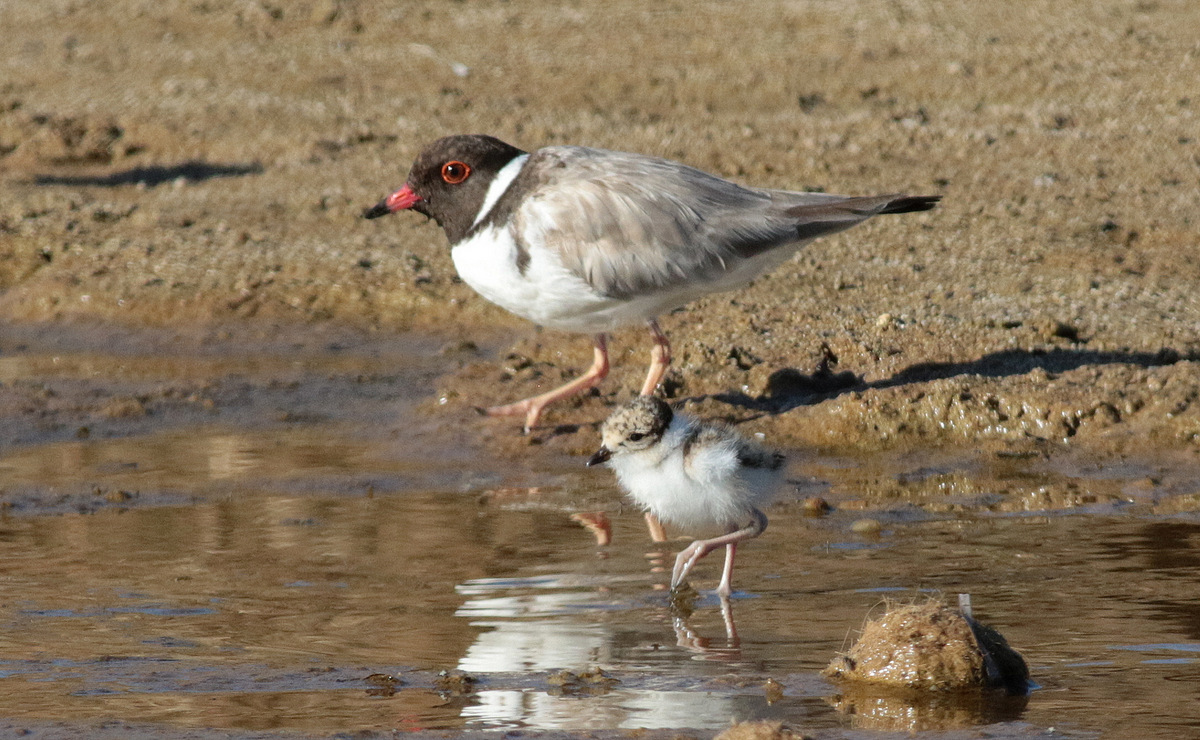In an effort to protect Australia’s most threatened beach-nesting birds, Green Adelaide has enlisted the services of a trained conservation dog to detect the dens of one of their biggest threats – European foxes – on Adelaide’s beaches.

For hooded plovers during nesting season, foxes are a significant threat to their eggs and chicks, with disturbance by people and off-lead dogs also a major concern.
Green Adelaide Coast and Seas Team Leader Tony Flaherty said the aim of detecting and managing fox dens is to disrupt patterns of fox behaviour, such as foraging on beaches and targeting nests, which will hopefully provide some respite to breeding birds and improve their chick’s chance of survival.
“Finding fox dens can be a laborious task for humans, but, Nessie, an English springer spaniel, took just minutes to sniff out the elusive fox dens,” Mr Flaherty said.
“Nessie’s discoveries across Adelaide’s hooded plover nest sites would have taken human conservation teams hours to find and will hopefully prove to be an effective way of managing the threat of this pest species.
“At some sites, birds are attempting to nest multiple times due to fox predation and dog and human disturbances.”

Nessie has been professionally trained by Conservation Dogs SA, where she learnt to track fox scent, before hitting the beaches in search of their dens.
“At our first site, it took Nessie about 10 minutes to find the first fox den and another 5 to find the second,” Mr Flaherty said.
“At another site, where no dens had been found by a human search, Nessie was able to find a well-concealed den in just 8 minutes.
“Once a den is detected, we work with landowners to manage the threat and in turn, minimise the impact of foxes on these threatened birds.”

Detection dogs like Nessie are used throughout Australian to protect a range of wildlife such as koalas, flying foxes and lizards, and to detect noxious weeds and even marine pests from boats.
“The use of conservation dogs to detect foxes has so far proven to be very efficient and effective,” Mr Flaherty said.
“We are also looking to train dogs for other conservation work, such as threatened plant and butterfly larval detection.”

English springer spaniels are working dogs with an incredible sense of smell, making them ideal sniffer dogs.
Nessie is a highly trained conservation dog, is always very responsive to commands and remains under effective control at all times.
She is clearly identifiable with a hi-vis vest and temporary signage is placed at the site when the dog is at work.

The Hooded Plover project is coordinated by BirdLife Australia in partnership with Green Adelaide and the Hills and Fleurieu Landscape Board, with support from local councils, and is funded by Green Adelaide with additional support from the Australian Government through the Hills and Fleurieu Landscape Board.
There are about 32 hooded plover breeding pairs monitored and actively managed on the Fleurieu and Adelaide metropolitan coast as part of the project.
Threats to nesting are regularly assessed and have been analysed through intensive monitoring of hooded plovers.
